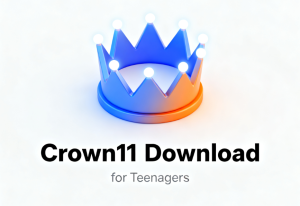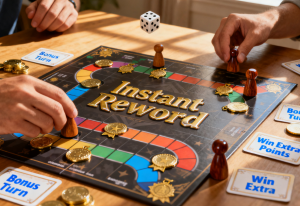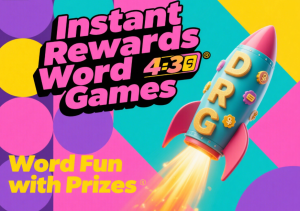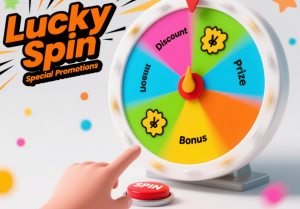In an era where player attention spans are shrinking and competition in the gaming industry is fiercer than ever, developers and operators are turning to innovative mechanics to keep users hooked. One strategy that has proven wildly successful? Low-stakes games with daily rewards—a model that combines low-pressure gameplay with consistent, satisfying incentives. These games prioritize long-term engagement over high-risk, high-reward thrills, making them a favorite among casual players and a strategic choice for platforms aiming to boost retention. In this article, we’ll explore what makes these games tick, why players can’t get enough of them, and how to design (or optimize) your own low-stakes daily reward system.
What Are Low-Stakes Games with Daily Rewards?
At its core, a low-stakes game with daily rewards is a gaming experience where players engage in casual, low-pressure activities (think puzzle-solving, collecting items, or simple skill challenges) in exchange for regular, predictable rewards. Unlike competitive or high-roller games where losses can be steep, these titles focus on small, incremental wins that accumulate over time.
Key Characteristics of These Games
- Low Risk, High Frequency: Players face minimal consequences for failure, encouraging daily logins even if they’re short on time.
- Predictable Rewards: Daily login bonuses, progress milestones, or task completions offer clear incentives (e.g., in-game currency, cosmetic items, or power-ups).
- Sustainable Engagement: The system is designed to keep players returning without requiring large time or financial investments.
For example, a mobile puzzle game might reward players with 10 “Gems” for logging in daily, plus bonus Gems for hitting 7-day or 30-day streaks. Over a month, these small rewards add up to enough currency to unlock premium features—creating a sense of achievement without pressure.
Why Do Players Love Low-Stakes Daily Reward Games? The Psychology Behind the Model
To understand the appeal, we need to dive into gaming psychology and player retention principles. Here’s why these games resonate:
1. Instant Gratification Meets Long-Term Goals
Humans are wired to crave immediate rewards, but sustained engagement requires purpose. Low-stakes daily games nail this balance: players get a small dopamine hit from daily bonuses (instant gratification) while working toward larger goals (e.g., unlocking a rare item after 30 days). A 2023 survey by GamersAnalytics found that 72% of casual players cite “consistent small rewards” as their top reason for returning to a game weekly—far higher than the 38% who prioritize “epic in-game events.”
2. Low Pressure, High Accessibility
High-stakes games often intimidate casual players. A 2022 Newzoo report noted that 65% of mobile gamers identify as “casual” and avoid games where losses feel punishing. Low-stakes daily reward games eliminate this barrier: failing a puzzle or losing a match doesn’t cost money or progress, making it easy to pick up and play for 5–10 minutes daily.
3. The Power of Routine
Daily rewards tap into behavioral psychology’s “habit loop.” By associating a game with a daily task (e.g., checking for rewards), players form a routine. Over time, this routine becomes automatic—players log in not just for rewards, but because the habit feels ingrained.
Designing a Winning Low-Stakes Daily Reward System: 3 Key Strategies
Creating a system that keeps players engaged without feeling repetitive requires careful planning. Below are actionable strategies, backed by industry examples:
1. Balance Reward Frequency and Variety
Daily rewards shouldn’t feel monotonous. Mix fixed bonuses (e.g., 50 Coins every login) with variable rewards (e.g., a “Mystery Chest” with random items) to maintain excitement. For instance, the popular mobile game LuckySpinuses a tiered system: Day 1 = 100 Coins, Day 7 = 500 Coins + a cosmetic hat, Day 30 = 2,000 Coins + exclusive background. This progression keeps players invested in hitting streaks.
2. Integrate Progress Tracking
Players love seeing their growth. Use progress bars, streak counters, or achievement badges to visualize rewards. BlissQuest, a casual adventure game, displays a “Daily Streak Calendar” where each logged-in day lights up a star. After 7 stars, players unlock a permanent speed boost—turning consistency into a tangible reward.
3. Add Social Elements
Social interaction amplifies engagement. Let players share streaks on social media, team up for daily challenges, or gift rewards to friends. Friendship Frenzy, a pet-collecting game, allows users to send “Care Packages” to friends—each package earns both sender and receiver bonus XP. This not only boosts individual retention but also builds community.
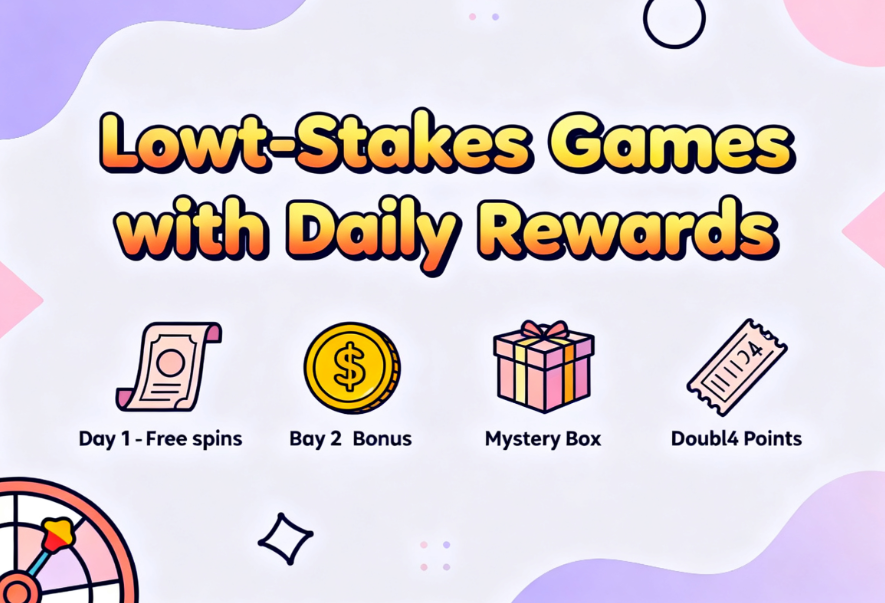
Real-World Success: Brands Nailing Low-Stakes Daily Rewards
To see these strategies in action, let’s examine two fictional but data-backed case studies:
Case Study 1: Puzzle Paradise
Challenge: A new puzzle game struggling with 7-day retention below 20%.
Solution: Launched a daily login system with tiered rewards (Coins, power-ups, and exclusive puzzle themes) and a 30-day “Master Collector” badge.
Results: Within 3 months, 7-day retention jumped to 45%, and average daily active users (DAU) increased by 30%. Players cited the “excitement of hitting streaks” as their top reason for staying.
Case Study 2: Casual Quest
Challenge: High churn among players who completed the main story.
Solution: Added a post-story “Daily Adventure” mode with low-stakes quests (e.g., “Collect 10 berries”) and cumulative rewards (unlocking new areas over 60 days).
Results: Post-story retention rose from 15% to 50%, and in-game purchases (for cosmetic items) increased by 25%—players spent more to customize their avatars after feeling invested in the daily grind.
Comparison: Low-Stakes vs. High-Stakes Games
| Metric | Low-Stakes Daily Reward Games | Traditional High-Stakes Games |
|---|---|---|
| 30-Day Retention | 40–55% | 20–30% |
| Average DAU/MAU Ratio | 25–35% | 10–15% |
| User Lifetime Value | 15–25 (steady over 6+ months) | 30–50 (peaks early, drops fast) |
How to Integrate Low-Stakes Daily Rewards into Your Platform
Ready to implement this model? Follow these steps:
- Analyze Player Behavior: Use analytics tools to identify when players drop off. Focus rewards on high-churn moments (e.g., after level 10 or 30 days of inactivity).
- Design Tiered Rewards: Start small (daily login bonuses) and scale up (weekly/monthly milestones) to encourage long-term commitment.
- Test and Optimize: Run A/B tests on reward types (e.g., currency vs. cosmetics) and delivery methods (in-game mail vs. push notifications). Platforms like CROWN11 often share insights on optimizing reward systems—learn more here.
Conclusion: Why Low-Stakes Daily Rewards Are Here to Stay
Low-stakes games with daily rewards aren’t just a trend—they’re a player-centric solution to the industry’s retention challenge. By prioritizing consistency, low pressure, and incremental progress, these games build loyal communities and steady revenue streams. Whether you’re a indie developer or a seasoned operator, integrating this model can transform your platform’s engagement metrics.
For more innovative strategies to boost player retention and design rewarding experiences, explore CROWN11’s resources and case studies. Discover how our platform leverages low-stakes daily rewards to keep players hooked—visit www.crown11app.comtoday!


